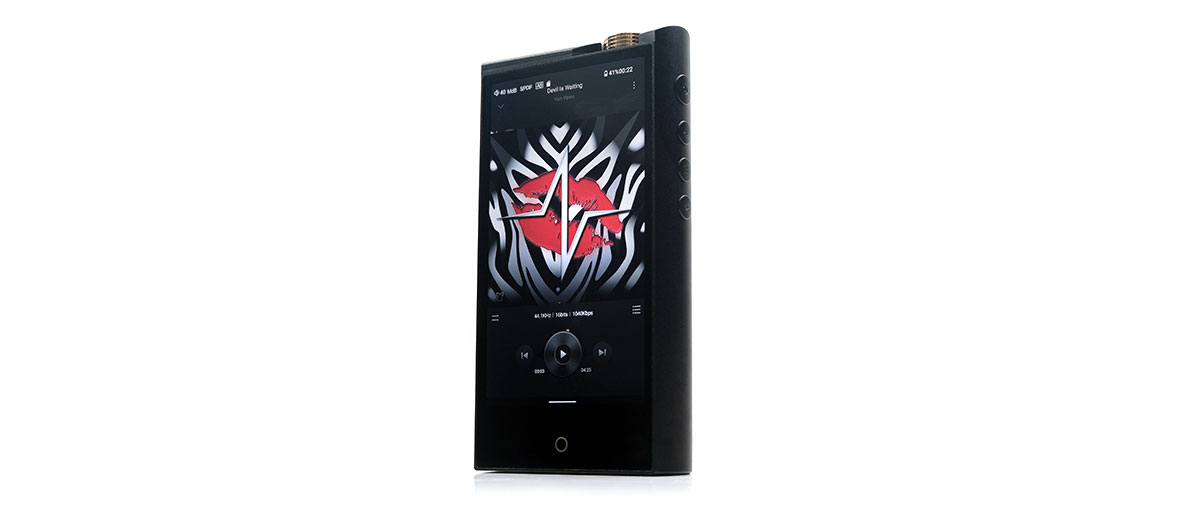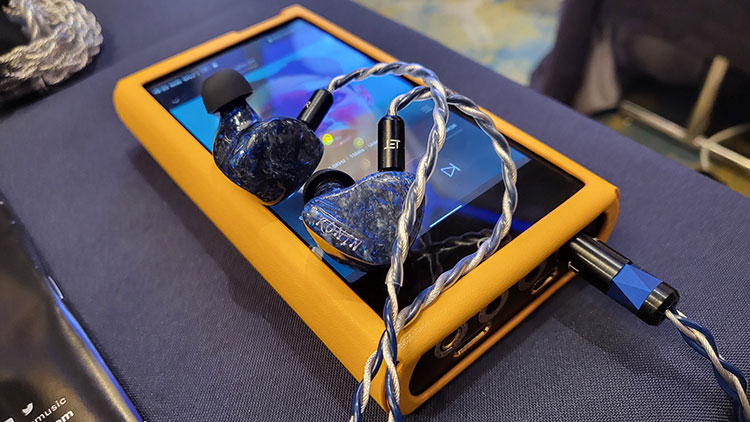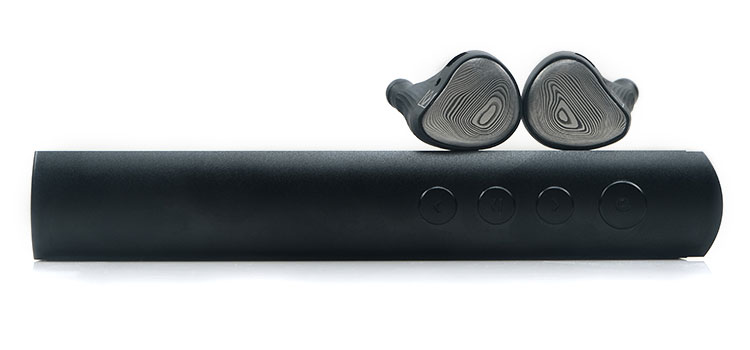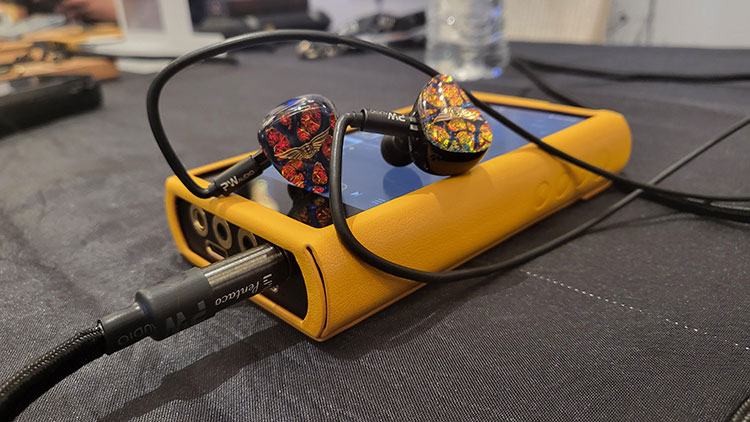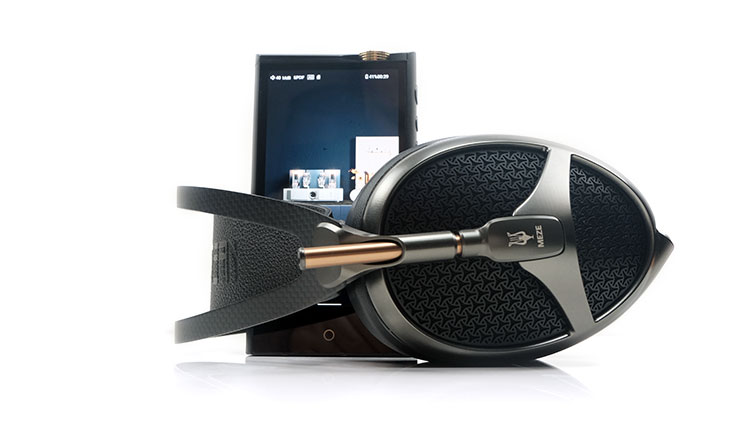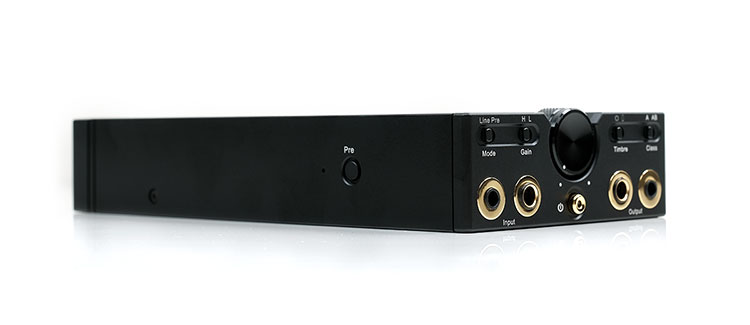Sound Impressions
The following sound impressions were compiled using the Unique Melody Multiverse Mentor, Noble Audio’s Viking Ragnar, and JH Audio’s Contour XO.
Summary
The N7 sound signature has created a sort of ripple effect in terms of how I hear IEMs in the time that I have had it. It has this unique ability to not only enhance the staging quality and imaging complexity of whatever monitor I threw at it but also deliver it in a very natural and agreeable tone.
Tonally, it is reminiscent of R-2R in a way with that solid note body, and great harmonic balance but it feels maybe slightly little more precise in its delivery. Especially for complex imaging passages where it’s one of the few DAPs I would trust right now not to fluff its lines and blur the delivery.
Flagship DAPs such as the N8ii and the RS8 will compete and perhaps excel more so in terms of either exacting micro-detail or vivid vocal sweetness.
However, once I started comparing competing DAPs at the N7’s price point or close to it, I did not find one that could wow me both on a technical and tonal coloration level quite like the N7.
If you have monster staging IEMs such as the Noble Audio Viking Ragnar and the Unique Melody Multiverse Mentor then the N7 is a fantastic pairing.
The sound is huge and dynamic with a beautiful black background allowing you to pick up all sorts of nuanced spatial cues in the extreme corners of their respective stereo fields with ease.
Not only that but switching to Class A mode keeps a lid on the potential treble excesses of the Ragnar whilst being able to tease out some excellent body and bass note definition on the Mentor’s bone-conducted quad-BA woofer low-end performance.
One could argue it’s a DAP for all seasons or all genres as there is so little it is found wanting on.
Timbre
Perhaps one of the topical discussions regarding the relative similarity of the two solid-state timbres from the N8ii has been addressed more than adequately on the N7.
With no tube timbre mode to steal the limelight in the N7, Cayin really did have to deliver the goods here. So, it is pleasing that the contrast between Class AB’s and Class A’s tonal coloration is much more immediately noticeable.
On the one side, you have the slightly cleaner and more neutrally colored Class AB. A tonal quality more fitting with monitors that bias to the thicker or warmer side. It’s a quality choice for keeping the bass more in check with a cleaner clearer mids performance alongside it.
However, upper mids and treble feel a little less refined compared to Class A. Note leading edges will seem a little cooler and vocals a little more prone to upper-order harmonic overtones and some very slight sibilance emphasis.
The N7 Class A changes the coloration by some margin compared to Class AB. The bass weight is significantly enhanced on monitors like the Multiverse Mentor and the Viking Ragnar and the treble is more refined in its delivery. Consequently, the vocal timbre on both monitors sounds smoother and richer in tone.
I must caveat the richer vocal description in Class A with how N8ii owners might view smooth and rich vocals. Neither Class on the N7 has the same level of midrange saturation as the N8ii in solid-state mode.
The N7 also does not push vocals as far forward nor give them as much exuberance and presence so I would say, comparatively speaking, the term “neutral to natural” is the more apt description of the N7’s general tone.
Staging & Dynamics
For me, this is the calling card of the N7 and the abiding memory of its performance right after any listening session. The N7 paired with a quality monitor casts wide and deep and by deep I mean the layers and complexity it can handle and reproducing it effortlessly and not just sub-bass rumble.
The background is beautifully black with some excellent dynamic range. Combined with a tonal balance that seems so evenly weighted, neither too warm nor too bright, your ear is never unnaturally distracted to one end or another unless the dynamics of the audio passage or the general tone of the IEM demands it.
One difference again from the N8ii is the midrange presentation, particularly vocal imaging. The N8ii vocal positioning is further forward and more vibrant in its delivery whereas the N7 is a shade more conservative in positioning but at the same time offers more space and separation around them and accompanying instruments.
It could well be one subtle factor in my own personal perception of that larger staging quality from the N7 with a lot of IEMs that are capable of maximizing that spacious midrange ability.
Now, if you are going to work the N7 into a headphone setup that is where it might come up short in working that staging magic into the listening equation.
Tonally, it is consistent with planar headphones such as the HIFIMAN Arya but once you pre-out to something more powerful like the C9 amplifier you immediately realize that a lot of the sub-bass power the headphone is capable of is missing. In short, the Arya might seem more compressed and politer sounding than it should or could be with the N7.
Synergy
Efficiency
The Cayin N7 is rated at 250mW into a 32Ω load @1kHz for SE and 500mW into the same weighted load for balanced. It’s reasonable if not outstanding amounts of grunt and should be perfectly fine for almost every IEM out there and a fair few efficient headphones.
Noise and channel balancing on the N7 are excellent on both single-ended and balanced outputs but then I would expect that since the emphasis is less on power and more on fidelity.
Channel balancing is subtle, there is a very slight right-channel bias maybe around steps 3-5 in low gain but it is very marginal and almost too of a setting to confidently listen to any audio.
Two things I did notice. Similar to the Cayin N8ii, the first 1-2 steps in low gain have no audio at all as if the mute relay kicks higher than zero. The second is an audible pop at the end of DSD tracks playback with sensitive IEMs, (balanced PO output) which can be a bit jarring.
Combine both low noise and that black background performance with sensitive resolving monitors and the N7 delivers some very nice dynamic range performances that help emphasize the holographic nature of its sound stage.
Monitors such as the Vision Ears Phonix and Campfire Audio’s Andromeda 2020 did not pick up any noticeable hiss with notoriously sparse and quiet albums such as Amber Rubarth’s Sessions From The 17th Ward (1-BIT DSD128). If you are going to hear noisy amplification that is one of the best albums to pick it up on.
IEM Pairings
I was quite lucky in that my testing of the N7 coincided with the UM Multiverse Mentor review write-up as well as CanJam Singapore 2023. The N7 was the DAP I took with me for testing during the show.
Now, whilst being on the road and short testing show conditions are not ideal for considered pairing write-ups I did come away with a very strong sense that the N7 was delivering some very tasting holographic properties to just about every IEM I threw at it.
Not just one or two of them, but all of the tested IEMs delivered some very impressive imaging and excellent levels of instrumental separation. That included the likes of Elysian Lab’s new Annihilator 2023 and Diva models, Vision Ear’s two prototypes, and Empire Ear’s latest Raven project.
Complexity & Dynamic Range
That seems to be the running theme with the N7 pairing synergy and one which was confirmed when I came back and got into the nitty gritty with several IEMs I am more familiar with. It seems to be in its element with monitors that are technically very capable of handling dynamic and complex sound passages.
Two such brilliant examples included the Noble Audio Viking Ragnar and the Unique Melody Multiverse Mentor. I had a hint of the N7’s capability during my flights to Singapore which was the first time I managed to pair both the Multiverse Mentor and the N7 together for any extended period of time.
However, it was not until I got back to the office for more testing did I realize some competing DAPs such as the FiiO M17 struggled to deliver the same level of clarity to the Mentor compared to the N7 on very delicate and fast-paced audio passages.
Not just on the fidelity but the dynamic range also with the N7 teasing out some excellent sub-bass and instrument fundamentals in such as vivid and clear-cut manner from the Viking Ragnar.
The N7 does not quite push vocals to the fore nor saturate them as much as the N8ii but instead gives monitors a very precise technical performance yet a smooth tonal quality, especially in Class A which is my preferred setting for cooler companions such as the Viking Ragnar.
For warmer sound signatures such as Phonix, I might elect instead for the slightly cleaner or more neutral bass tone offered by the N7’s Class AB mode but it’s not a given since the Class A mode also delivers a beautiful creamy vocal performance with the same monitor.
Power
I would stop short of pairing the N7 with more demanding planars or high-impedance headphones such as the DCA Stealth or the ZMF Headphones Atrium.
For that, I suggest using the line out or the stronger Vrms of the Pre out combined with a good headphone amplifier or the portable Cayin’s C9 for a more optimal driving experience. The N7 lacks the P+ mode of the N8ii which gives the flagship an advantage both in terms of Vrms and mW when activated.
That being said, it is on par with older flagships such as the Lotoo PAW Gold Touch, (500mW into 32Ω balanced), for output power so some headphones will have no real issues and then it comes down to a matter of acceptable scale, (more power equals more optimal), and tonal preferences.
Headphone Pairings
Acceptable headphone pairings with the N7 include the likes of the Meze Audio Empyrean or the closed-back Liric, two planar headphones that I class as easy enough to drive though both can scale with better power.
In both instances, a high-gain balanced 4.4mm output was really needed to maximize their driving potential and introduce a good measure of micro-control over volume. The dynamics were better on the Liric compared to the Empyrean but in both instances, I much preferred the Class A over the Class AB performance.
For the Liric it can get peaky in the treble with a poor match and for me, Class AB gave it a rougher treble tone which also bled a little into higher pitching vocal timbre. Not that it was sharp just a little grainy and less refined to my ear.
The Class A mode of the N7 was much smoother and firmer in note body throughout giving vocals and treble overtones from both headphones a more natural and agreeable tone, especially the Liric.
I did try to work the HIFIMAN Arya Stealth Magnet Version into the equation and whilst it sounded ok to my ears it wasn’t until I switched to the line-out on the C9 did I get an appreciation of how much bass depth and dynamic impact was lost with the N7 pairing.
Tonally, it sounds correct on the N7 with a balanced and natural tuning using Class A but more compressed and not as deep or as powerful as the C9/N7 line-out pairing. Those are two attributes I am loathed to lose from the N7.
Line-out / Pre-Out
Is there a difference between the line-out and pre-out performance? Well with the HIFIMAN Arya Stealth Magnet Version as our example again, there was, particularly on the lows.
Going from N7 PO to LO will enhance the depth by a considerable margin but going again to the higher Vrms Pre Out will widen the soundstage and enhance the quality of the deeper notes even further.
With the LO the sub-bass of the Arya was distinct but slightly more central in its imaging. With the N7 on Pre-out to the C9, the equivalent bass notes felt more atmospheric, more enveloping, and with a degree more density or solidity to go along with it.
Class A also sounds smoother to my ear using pre-out compared to the line-out. It feels the C9 has a better grip on the treble of the Arya going pre-out from the N7 and in turn, the mids timbre sounds more refined with a better vocal presence or at least slightly enhanced over the line-out performance.

